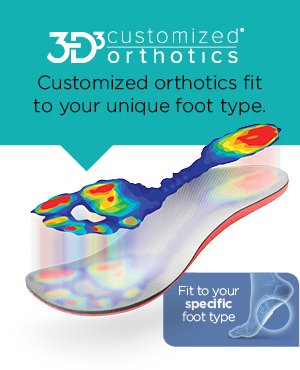Chondromalacia
Related Conditions:
Chronic pain behind or around the kneecap is often diagnosed as chondromalacia, or "runner's knee," an abnormal softening of the cartilage that makes it difficult to move your knee.
Chondromalacia, also known as Patellofemoral Stress Syndrome, occurs when the kneecap rubs against the lower end of the femur – the thighbone – instead of gliding smoothly over it. This repetition roughens the cartilage underneath the kneecap. The damage can range from a slight abnormality of the cartilage surface, to a surface that has been completely worn away to the bone.
Traumatic chondromalacia occurs when a blow to the kneecap actually tears off a piece of articular cartilage or bone.
The disorder most commonly appears in:
- Runners
- Skiers
- Cyclists
- Soccer players
Causes:
Softening of the kneecap's articular cartilage can be caused by:
- Trauma
- Overuse
- Muscle weakness
- Malalignment
- Age
Over-pronation can lead to malalignment, which means the lower leg twists inward while the quadriceps tendon pulls the patella outward. A tight hamstring, tight heel cords and tight quadriceps also contribute to the problem.
Young people who develop chondromalacia can usually blame trauma or overuse; if the condition appears in someone older, this person may also have osteoarthritis.
Symptoms:
Chondromalacia usually presents itself as a dull pain around or under the kneecap, and can worsen when engaging in any of these activities:
- Walking up or down stairs
- Walking on a hill
- Taking part in any activity that forces the knee to bear weight as it's straightened
- Running and sports activities
Relief and Prevention:
Chondromalacia can be treated with rest and ice to reduce swelling.
In addition, doctors recommend:
- Engaging in low impact exercises that strengthen muscles, particularly within the quadriceps
- Swimming or riding a stationary bike
- Stretching and strengthening the hamstrings and quadriceps
- Using a knee brace to provide relief
- Wearing stable shoes with added arch supports, especially during exercise or walking
- Taking over-the-counter pain relievers and
anti-inflammatory drugs
If the pain and swelling persist, consult your physician. Orthotics and/or surgery may be required.

